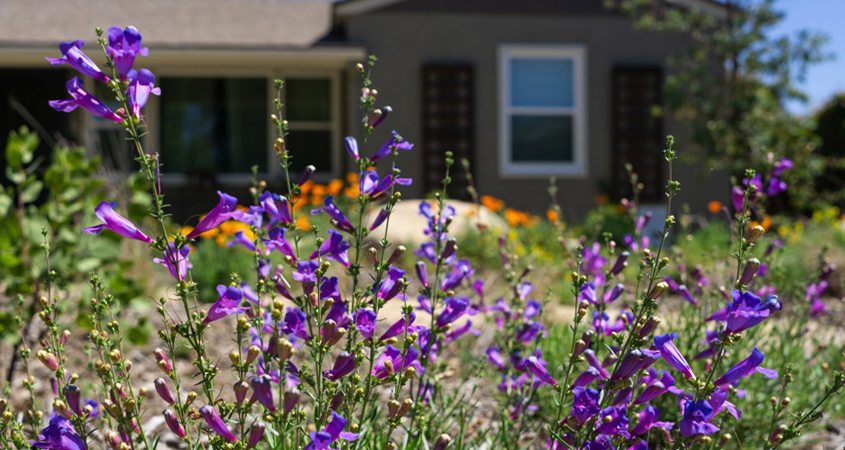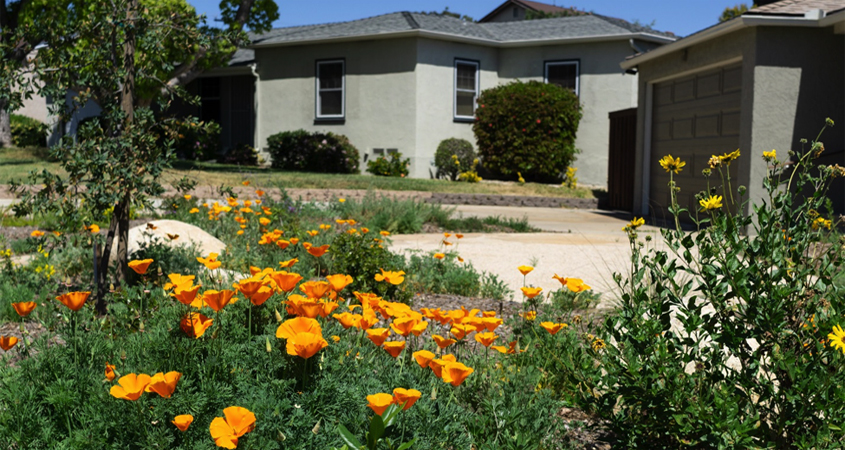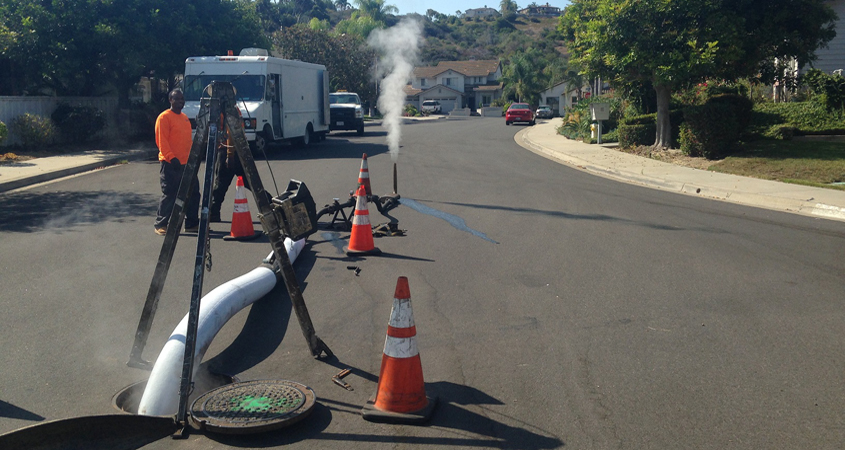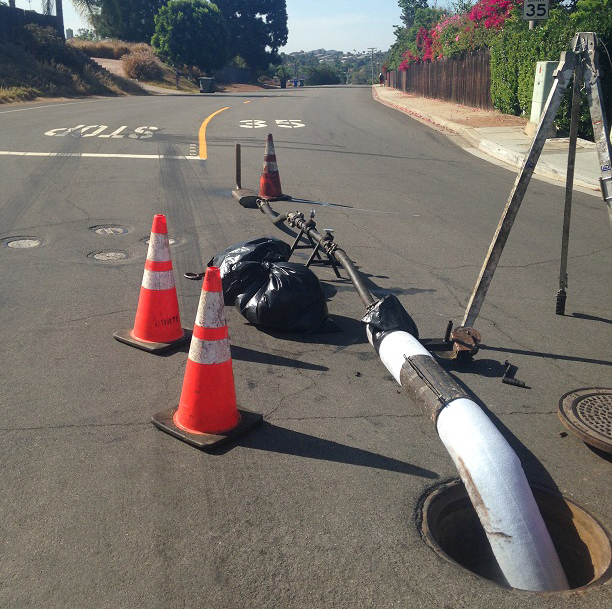California Native Garden Wins Helix’s 2019 Landscape Contest
Matt and Lauren Kirkpatrick of La Mesa are this year’s winner of the Helix Water District’s ‘WaterSmart Landscape Contest,’ an annual competition recognizing outstanding water-wise residential landscapes based on overall attractiveness, design, efficient irrigation and appropriate plant selection and maintenance.

Compared to the previous landscaping with thirsty turf, the new landscaping uses much less water. Photo: Helix Water District
Compared to the thirsty turf in the Kirkpatricks’ previous landscaping, the growing, colorful and entirely native new landscaping requires much less water and creates a place of inspiration and peace for these outdoor enthusiasts. Over the two-month billing period ending this April, the home used just 13 units of water, which is almost 40 percent less than the average water use of other Helix customers. One unit is 748 gallons.
The Kirkpatricks purchased the home in 2014 with a front yard full of grass that required frequent watering and mowing to maintain a modest appearance. In the end, the lawn’s appearance was lackluster, costly, and time consuming for the couple. Taking advantage of SoCal WaterSmart’s turf removal rebate program, the Kirkpatricks tossed their turf for a beautiful native landscape with less maintenance and less water consumption.
The couple chose a native plant pallet so they could enjoy the look, feel and smell of what they love – the California outdoors.
“California natives were an obvious choice,” said Matt Kirkpatrick. “They are a reflection of our love for the plants we know closely from our experiences outdoors. Native plants make us feel at home and give us an appreciation for the beauty of our state.”
Colorful new landscaping already in full spring bloom

Even though the new landscaping is only four months old, it is already in full bloom with California native plants. Photo: Helix Water District
Although only a few months old, the yard already displays a wonderful spring bloom with a wide variety of colors that native landscapes can offer. There are vibrant oranges from hundreds of California poppies, reds from sticky monkey flower, blues from ceanothus, purples from lupine, yellows from yarrow and plenty of green and golds from various shrubs and grasses. At the center of the landscape is a young but promising Engelmann Oak, a signature Southern California tree among wild and urban landscapes.
Plants receive water from rainwater catchment and through an efficient irrigation system, which the couple installed. The landscape captures rainwater from the roof and diverts it into two separate swales designed to absorb the water and allow it time to soak into the soil. The two swales provide water for half of the yard and prevent rainwater from running off into the street. The remaining plants receive water through high-efficiency spray nozzles that were retrofitted onto the existing irrigation system and use less water than the previous sprinklers. The Kirkpatricks only run the system once per month during the warm season.
Native gardens are just one of many different designs of landscapes available to homeowners looking to redesign their thirsty and traditional landscapes. In addition to requiring minimal irrigation beyond rainfall, native gardens are colorful, low maintenance and provide a natural habitat for local wildlife.
Free WaterSmart Landscape Makeover classes provide blueprint for success

The Kirkpatricks took advantage of the Water Authority’s WaterSmart Landscaping classes. Photo: Helix Water District
Like the 2018 Helix landscape contest winners, the Kirkpatricks took advantage of the San Diego County Water Authority’s free WaterSmart Landscape Makeover Program four course series to educate themselves about their options. They then chose a landscaping contractor familiar with native plants which thrive in a residential landscape to bring their plan to life.
The Kirkpatricks will receive their prizes including gift cards totaling $250 and an award certificate at the Helix Water District’s June board of directors meeting The family will also receive a ‘WaterSmart Contest Winner’ sign to display in the yard.
The annual landscape contest runs from January through April each year. Visit the Helix Water District’s website, Facebook page or Twitter for more information.
Helix Water District treats and delivers water to over 276,000 people in La Mesa, El Cajon, Lemon Grove and parts of Spring Valley, Lakeside and unincorporated San Diego County.






